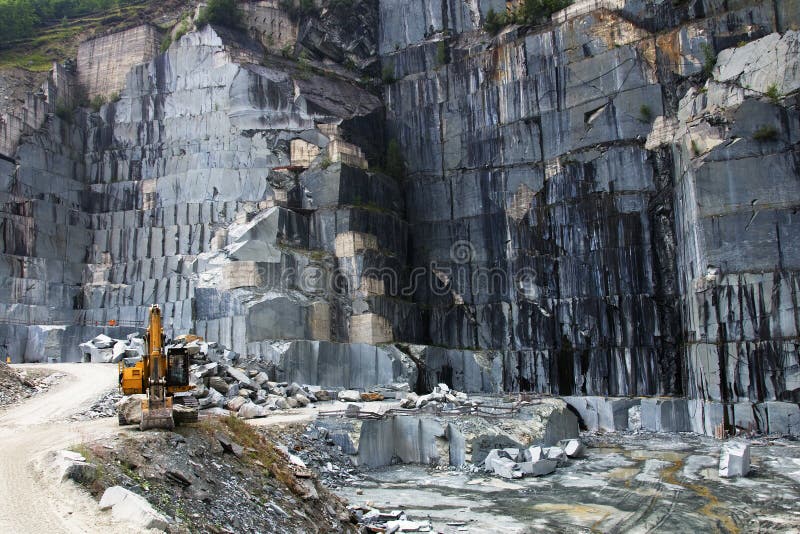Uncovering the Rich Background and Sustainable Practices of Granite Quarrying
As we stand on the precipice of discovering the elaborate tapestry of granite quarrying, a trip through time exposes not just the physical act of drawing out stone but also the cultural and historical value woven right into the extremely textile of this technique. From the old beginnings that laid the foundation for contemporary quarrying methods to the sustainable techniques that are shaping the future of this industry, each carve mark on granite surface areas narrates waiting to be unearthed (granite quarries in south africa). The tradition of granite quarrying extends much beyond simple extraction; it is a testimony to human ingenuity, strength, and the long-lasting appeal of this majestic stone
Old Origins of Granite Quarrying
Going back to old worlds, the technique of quarrying granite has been an indispensable component of human background and building innovation. The earliest evidence of granite quarrying go back to ancient Egypt, where large pyramids and elaborate sculptures were crafted from this resilient rock. The Egyptians utilized primitive devices to remove granite blocks from quarries, showcasing the relevance of this material in their monumental buildings.
Relocating ahead in history, the Greeks additionally made significant payments to the quarrying of granite. The Greeks made use of granite in different building marvels, such as temples and statues, showing their skill in shaping and sculpting this hardy stone. The Romans better fine-tuned the strategies of quarrying granite, using sophisticated devices like knives and hammers to essence and form granite for their iconic structures.
Via the centuries, the technique of quarrying granite has actually progressed, with contemporary technologies improving effectiveness while keeping the classic charm of this natural rock - granite quarries in south africa. From ancient people to modern builders, the tradition of granite quarrying remains to form our world
Evolution of Quarrying Strategies
The evolution of quarrying strategies has actually been marked by a continuous progression towards higher effectiveness and precision in drawing out granite. Early quarrying methods involved hand-operated labor with fundamental tools such as knives, hammers, and wedges to extract granite blocks from the planet.
In more current times, the development of machinery transformed the quarrying sector, enabling faster removal rates and raised productivity. Technologies such as diamond wire saws, high-pressure water jets, and pneumatically-driven drills have actually become basic in modern quarries, enabling precise cutting and decreased waste. Developments in computer-controlled devices and 3D modeling have actually maximized quarrying operations, leading to very little environmental effect and boosted sustainability methods. As the need for granite continues to rise, the evolution of quarrying methods continues to be important to meeting market requires successfully and sustainably.
Cultural Relevance of Granite
Granite holds a profound cultural discover this relevance throughout numerous human beings due to its long-lasting existence in building masterpieces and prized monuments. The social significance of granite extends past its physical attributes; it personifies durability, stability, and eternity, making it a sign of withstanding legacies and practices.

Lasting Practices in Quarrying
In the middle of the abundant history of granite quarrying and its cultural importance exists an expanding emphasis on lasting techniques within the sector. As ecological awareness and worries about resource deficiency have actually heightened around the world, the quarrying industry has actually increasingly welcomed lasting techniques to reduce its influence on the setting and bordering neighborhoods.

Moreover, improvement and recovery of quarry websites post-extraction are indispensable to sustainable methods. By recovering quarried areas to a natural or beneficial state, such as developing wild animals environments or entertainment spaces, quarriers can balance out the ecological footprint of their operations and add favorably to the regional ecosystem.
Legacy of Granite Quarrying
With a historical backdrop steeped in workmanship and commercial progression, what sustaining effect has granite quarrying left on the landscape of contemporary culture? The tradition of granite quarrying transcends mere extraction techniques; it has actually formed building marvels, metropolitan landscapes, and social heritage worldwide. The sturdy nature of granite has actually made it a recommended selection for monoliths, buildings, and framework, standing as a testimony to the ability and artistry of quarry workers throughout generations.
Moreover, the financial impact of granite quarrying can not be forgotten. The market continues to provide employment possibility and drive neighborhood economic situations in regions where see granite removal is widespread. It has actually likewise spurred technical developments in quarrying techniques and devices, resulting in more reliable and sustainable practices.
In regards to sustainability, the tradition of granite quarrying consists of efforts to alleviate ecological influences with reclamation projects and responsible source monitoring. By stabilizing financial interests with environmental stewardship, the sector aims to make sure that future generations can proceed to take advantage of this long-lasting natural deposit.
Conclusion

Comments on “Checking Out Granite Quarries in South Africa: A Comprehensive Guide”